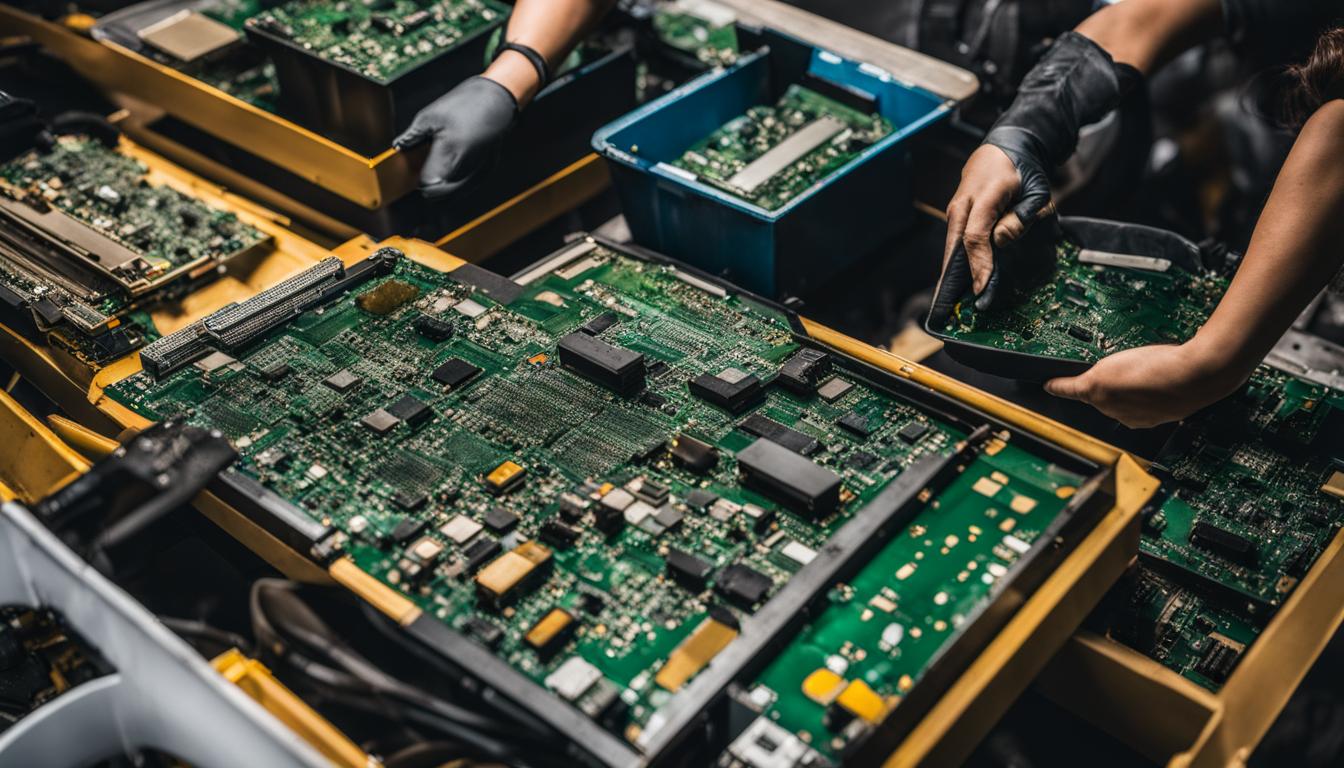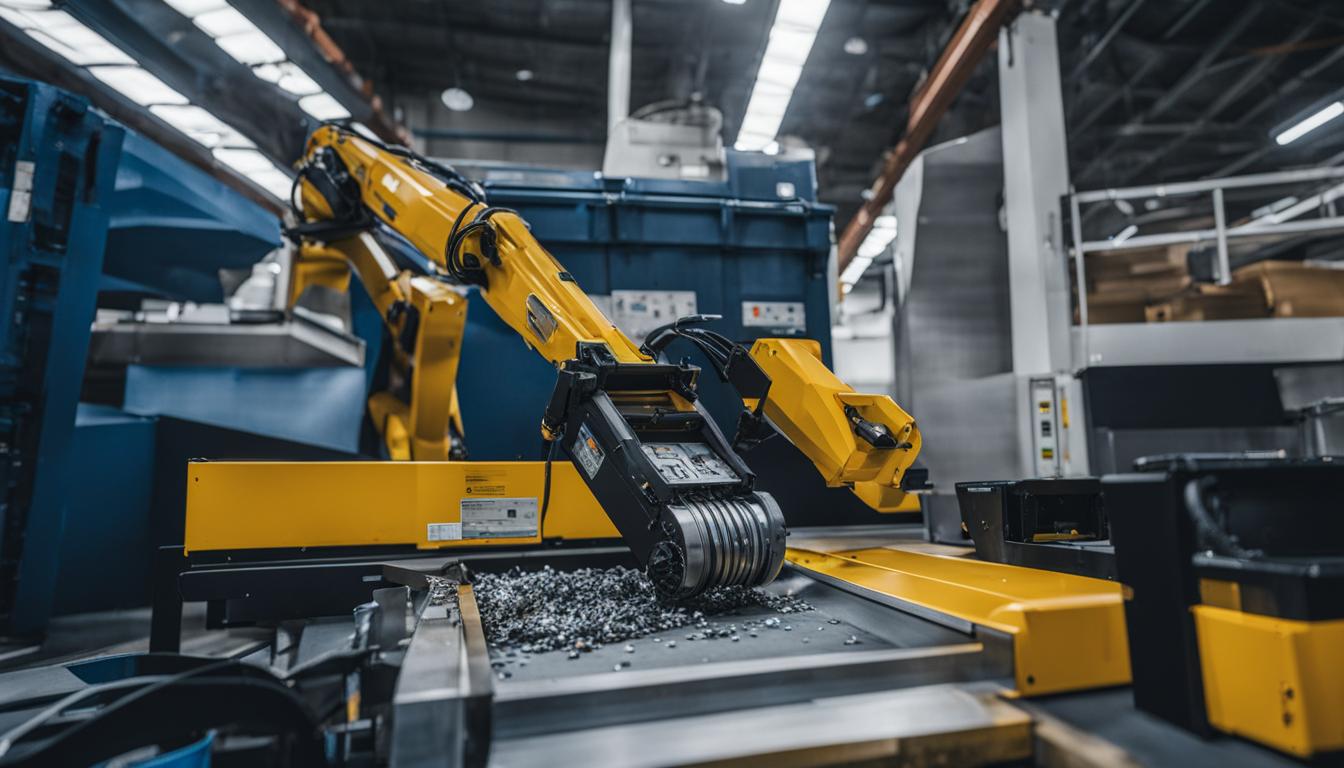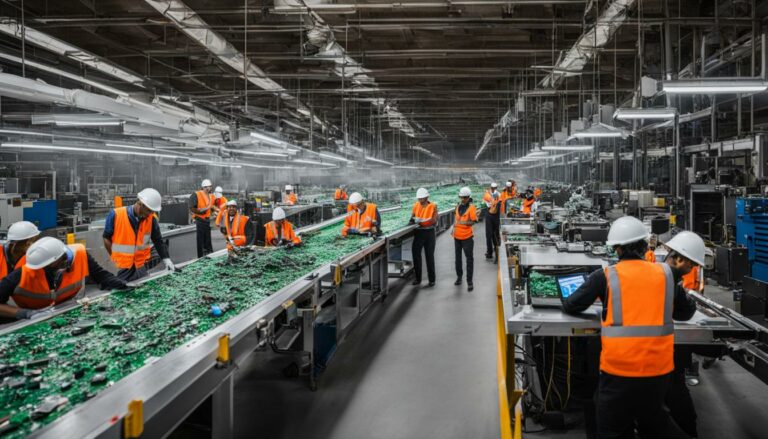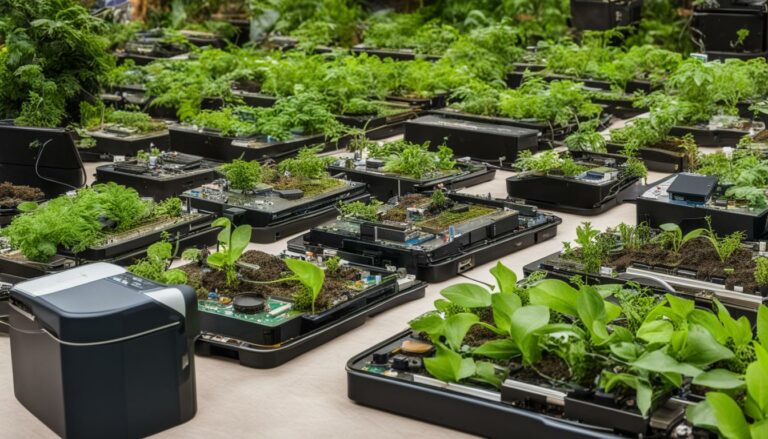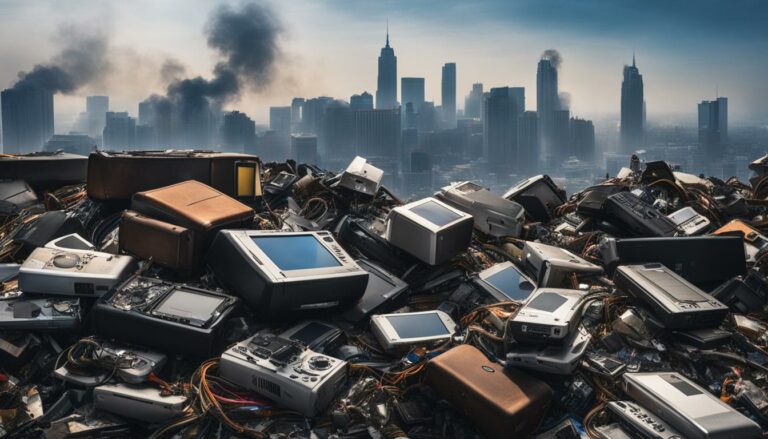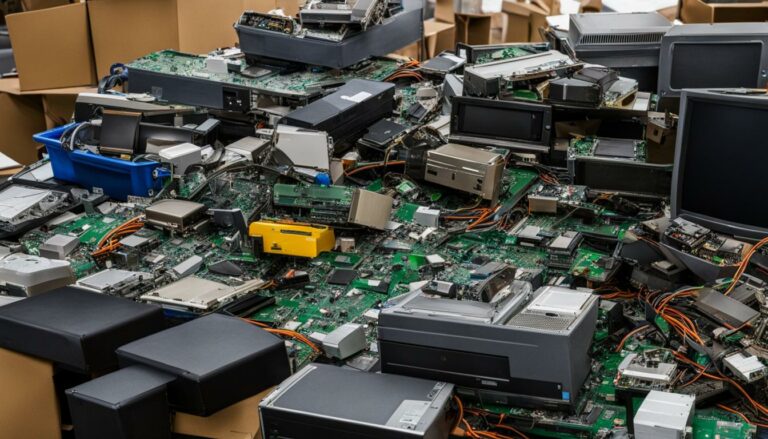The Interplay Between Repair, Reuse, and Recycling in IT
The implementation of new technological tools in the circular economy is changing waste management and boosting new ways of recycling. Technology plays a crucial role in extending the life cycle of raw materials, allowing for consumption and reuse instead of disposal. Approximately 50 tons of electronic waste are generated each year worldwide, highlighting the need for innovative solutions. Connectivity and digitalization are transforming waste management processes, utilizing Internet of Things and Artificial Intelligence technologies to optimize recycling and enhance sustainability. 5G connectivity is essential for creating platforms that collect and analyze data, enabling more efficient waste management. Examples of technological innovation in recycling include 3D printing, which allows for the reuse of plastic waste in the production of new items. Other branches of science and technology, such as nanotechnology and biotechnology, are also being applied to optimize recycling processes and reuse organic waste.
Key Takeaways
- Repair, reuse, and recycling are integral to achieving a sustainable and circular economy.
- Technology, connectivity, and digitalization are revolutionizing waste management processes.
- Policy initiatives and public support are crucial for promoting repair and reuse practices.
- Prioritizing reuse and repair over recycling maximizes resource conservation and reduces waste.
- Building a skilled workforce for repair and reuse is essential for the successful transition to a circular economy.
Note: Remember to add the closing tags for all HTML tags before pasting the text onto your website.
The Benefits of Connectivity and Digitalization in Waste Management
Connectivity and digitalization have revolutionized waste management processes, leading to more optimized, efficient, and sustainable practices. The integration of Internet of Things and Artificial Intelligence technologies enables the collection and analysis of data from waste collection, allowing for the optimization of waste sorting and recycling.
Platforms that utilize Big Data tools and sensors provide valuable information about the type and amount of waste generated, allowing for real-time analysis and decision-making. Geolocation sensors in vehicles can optimize waste transportation routes to recycling plants, reducing costs and environmental impact.
The implementation of a powerful infrastructure, such as 5G connectivity, is vital for supporting the growing number of connected devices and facilitating the management and analysis of waste data.
Enhancing Waste Management through Connectivity and Digitalization
Connectivity and digitalization play a pivotal role in optimizing waste management processes. By leveraging the Internet of Things (IoT) and Artificial Intelligence (AI) technologies, waste collection and recycling can be streamlined and made more efficient.
One of the key benefits of connectivity and digitalization is the ability to collect and analyze data from waste collection. This data can provide valuable insights into the type and quantity of waste generated, enabling waste management companies to make informed decisions in real-time.
Furthermore, through the use of geolocation sensors in waste collection vehicles, routes can be optimized to minimize travel distances and reduce environmental impact. This not only helps to lower costs but also contributes to the overall sustainability of waste management practices.
| Benefits of Connectivity and Digitalization in Waste Management |
|---|
| Optimization of waste sorting and recycling |
| Real-time analysis and decision-making |
| Reduction in costs and environmental impact |
| Support for the growing number of connected devices |
| Facilitation of waste data management and analysis |
Connectivity and digitalization, particularly with the implementation of 5G connectivity, provide the infrastructure necessary to support the increasing number of connected devices in waste management. This enables seamless communication and data transfer, ensuring efficient and effective management and analysis of waste data.
Overall, connectivity and digitalization have transformed waste management practices, optimizing recycling efforts, and contributing to the sustainability of waste management processes. By harnessing the power of Big Data, sensors, and advanced technologies, waste management companies can make data-driven decisions, reduce costs, minimize environmental impact, and create a more sustainable future.
Policy Initiatives to Promote Repair and Reuse
Various policy initiatives have been introduced to promote repair and reuse practices as part of the circular economy. These initiatives aim to make repair more affordable by offering tax reductions and repair vouchers. Examples of successful repair voucher schemes in Austria and France have shown that financial incentives can significantly increase repair activities. Another important aspect is making repair easier by expanding the right to repair regulations to cover all consumer products and strengthening design standards. Access to service manuals and spare parts for a reasonable period of time after a product is retired from the market is essential. Additionally, the introduction of a repair index can help consumers make informed choices by indicating the repairability of products. This index has been successfully implemented in France, leading to increased consumer preference for more repairable products.
Financial Incentives
One of the key policy initiatives to promote repair and reuse is the provision of financial incentives. Tax reductions and repair vouchers are effective ways to make repair services more affordable for consumers. By reducing the financial burden of repair, these incentives encourage individuals to choose repair as a viable option instead of discarding and replacing products. Countries like Austria and France have successfully implemented repair voucher schemes, resulting in a significant increase in repair activities. These financial incentives not only benefit consumers but also contribute to the overall reduction of waste and the conservation of resources.
Right to Repair Regulations
Expanding right to repair regulations is another important policy initiative in promoting repair and reuse. These regulations aim to ensure that consumers have the legal right to repair their products by accessing service manuals and spare parts. By extending the scope of right to repair regulations to cover all consumer products, including electronic devices, appliances, and vehicles, consumers are empowered to make informed choices and have more control over the lifecycle of their products. Strengthening design standards also plays a crucial role in facilitating repair and extending product lifetimes, as products that are designed with repairability in mind are easier and more cost-effective to fix.
| Policy Initiatives | Description |
|---|---|
| Financial Incentives | Tax reductions and repair vouchers to make repair more affordable |
| Right to Repair Regulations | Expanding regulations to cover all consumer products and ensuring access to service manuals and spare parts |
| Repair Index | Introducing a repair index to help consumers make informed choices by indicating the repairability of products |
Repair Index
An innovative policy initiative to promote repair and reuse is the introduction of a repair index. This index provides consumers with information about the repairability of products, enabling them to make more sustainable choices. France has successfully implemented a repair index, which rates products on their repairability and provides transparency to consumers. By encouraging the purchase of products with higher repairability scores, consumers can contribute to reducing waste and extending the lifespan of products. The introduction of a repair index not only empowers consumers but also incentivizes manufacturers to design more repairable products, ultimately fostering a circular economy.
Prioritizing Reuse and Repair over Recycling
When it comes to managing waste and promoting a circular economy, it is crucial to prioritize reuse and repair over recycling. While recycling plays a valuable role in keeping materials in circulation, it is not always the most sustainable option. By emphasizing reuse and repair, we can maximize resource conservation, reduce waste, and create a more sustainable future.
One way to prioritize reuse and repair is through Extended Producer Responsibility (EPR) rules. Currently, EPR focuses primarily on recycling, but there is a need to expand these regulations to incentivize and invest in reuse and repair infrastructure. By shifting the focus towards repair and reuse, we can extend the lifespan of products, save money, and reduce environmental impact.
| Benefits of Prioritizing Reuse and Repair | Waste Reduction | Investment |
|---|---|---|
| Maximizes resource conservation | Reduces the amount of waste generated | Creates opportunities for job growth |
| Minimizes environmental impact | Preserves raw materials | Contributes to the achievement of sustainability goals |
| Cost-effective | Reduces the need for new production |
By prioritizing reuse and repair, we can create a more circular economy where products are designed to last longer, are easily repairable, and can be repurposed at the end of their life cycle. This shift requires policy changes that incentivize and support repair activities, such as tax reductions for repair services and the expansion of right to repair regulations. It also involves educating consumers about the benefits of repair and providing easy access to repair services and spare parts.
Ultimately, a transition from a linear economy to a circular economy requires a collective effort from governments, businesses, and consumers. By embracing reuse and repair as priorities, we can reduce waste, conserve resources, and build a more sustainable future.
Building a Skilled Workforce for Repair and Reuse
The transition to a circular economy necessitates a skilled workforce with expertise in repair and reuse. With the projected growth in demand for repair and reuse jobs, it is essential to invest in developing the necessary skills. However, there is currently a shortage of repair technicians, and limited opportunities exist for repair training and accreditation. To address this issue, it is crucial to introduce an accreditation scheme for repair professionals, provide funding for repair skills interventions such as Skills Bootcamps and repair apprenticeships, and integrate repair training into existing engineering and design apprenticeships.
By establishing an accreditation scheme for repair professionals, it will ensure that individuals possess the necessary skills and knowledge to effectively repair and reuse products. Additionally, funding initiatives like Skills Bootcamps and repair apprenticeships will provide valuable opportunities for individuals to gain hands-on experience and specialized training in repair and reuse activities. Integration of repair training into existing apprenticeship programs will further enhance the development of a skilled workforce for the circular economy.
“Investing in repair skills is crucial to meet the growing demand and ensure the successful implementation of repair and reuse initiatives.”
Benefits of Building a Skilled Workforce for Repair and Reuse
- Meeting the increasing demand for repair and reuse jobs
- Enhancing the implementation of repair and reuse initiatives in the circular economy
- Reducing the shortage of repair technicians
- Promoting job growth in the green sector
- Contributing to the overall sustainability and resource conservation goals
Investing in the development of repair skills will not only address the skills gap but also create long-term employment opportunities. By building a skilled workforce, we can effectively contribute to a more sustainable future and foster a circular economy that prioritizes repair and reuse over disposal.

Public Support for Repair, Reuse, and Recycling Initiatives
Public support for repair, reuse, and recycling initiatives plays a significant role in driving positive change towards a more sustainable and circular economy. Surveys have consistently shown that the majority of the general public strongly supports measures aimed at reducing waste and promoting environmentally-friendly practices.
Financial incentives are particularly important in gaining public support for repair, reuse, and recycling. Making repair more affordable through tax reductions and vouchers, for example, encourages individuals to choose repair over replacement, contributing to the reduction of electronic waste and the preservation of valuable resources.
“I believe that repairing our electronic devices is not only cost-effective but also environmentally responsible. It’s great to see policies in place that support and encourage repair, making it more accessible to everyone.” – John, a supporter of repair and reuse initiatives
Accessibility is another key factor in garnering public support. Easy access to repair services and spare parts allows individuals to choose repair as a viable option, extending the lifespan of products and reducing the demand for new ones. Informed choices about the repairability of products can be facilitated through the implementation of a repair index, providing consumers with valuable information to make sustainable purchasing decisions.
Overall, public support for repair, reuse, and recycling initiatives is crucial in driving policy changes and creating a more sustainable future. By aligning financial incentives, improving accessibility, and empowering consumers with information, we can work together to build a circular economy that promotes resource conservation and environmental stewardship.
Conclusion
The interplay between repair, reuse, and recycling is crucial for achieving a sustainable and circular economy. Through the implementation of new technological tools, such as connectivity and digitalization, waste management processes have been revolutionized, leading to optimized recycling and resource conservation. These advancements, along with policy initiatives that promote repair and reuse, are essential in creating a supportive environment for sustainable practices.
Public support for repair, reuse, and recycling initiatives is overwhelming, with consumers valuing financial incentives, accessibility to repair services and spare parts, and the ability to make informed choices about product repairability. By embracing a culture of repair, reuse, and recycling, we can preserve our planet, cut business costs, and contribute to a more sustainable future.
Building a skilled workforce in repair and reuse activities is also vital for the successful transition to a circular economy. The demand for repair and reuse jobs is expected to increase significantly, emphasizing the need for repair skills training and accreditation. By investing in the development of repair skills through initiatives such as apprenticeships and funding interventions, we can meet the growing demand and ensure the successful implementation of repair and reuse initiatives.
In conclusion, repair, reuse, and recycling are key pillars in waste management and the circular economy. By leveraging technology, policy support, public engagement, and a skilled workforce, we can create a more sustainable and environmentally conscious society. Through these collective efforts, we can minimize waste, preserve resources, and foster a circular economy that benefits both present and future generations.
FAQ
How is technology changing waste management?
Technology is revolutionizing waste management by extending the life cycle of raw materials, optimizing recycling processes, and enhancing sustainability.
What role do connectivity and digitalization play in waste management?
Connectivity and digitalization allow for the collection and analysis of data from waste management processes, enabling optimized waste sorting, recycling, and transportation.
What are some policy initiatives to promote repair and reuse?
Policy initiatives include offering tax reductions and repair vouchers to make repair more affordable, expanding right to repair regulations, and introducing a repair index for product selection.
Why should reuse and repair be prioritized over recycling?
Prioritizing reuse and repair maximizes resource conservation, reduces waste, and saves money. Recycling should complement these practices, but not be the sole focus.
How can we build a skilled workforce for repair and reuse?
Building a skilled workforce involves investing in repair skills, introducing accreditation schemes, funding repair skills interventions, and integrating repair training into existing engineering and design apprenticeships.
Do repair, reuse, and recycling initiatives enjoy public support?
Yes, surveys show that the general public supports measures such as tax reductions, easy access to repair services and spare parts, and the ability to make informed choices about repairability.
What is the interplay between repair, reuse, and recycling?
Repair, reuse, and recycling are interconnected practices that work together to achieve a sustainable and circular economy, preserving resources and reducing waste.

